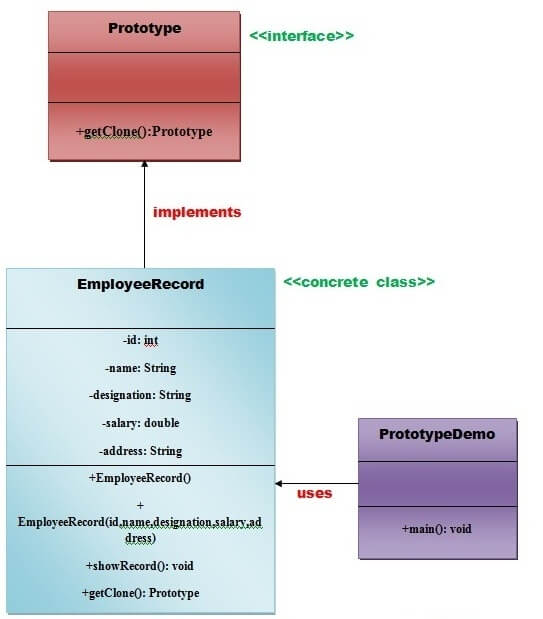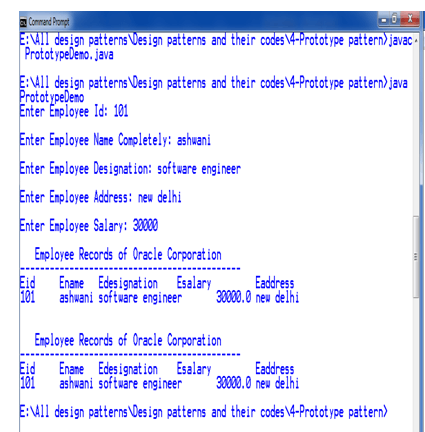Prototype Design PatternPrototype Pattern says that cloning of an existing object instead of creating new one and can also be customized as per the requirement. This pattern should be followed, if the cost of creating a new object is expensive and resource intensive. Advantage of Prototype PatternThe main advantages of prototype pattern are as follows:
Usage of Prototype Pattern
UML for Prototype Pattern
Example of Prototype Design PatternLet's see the example of prototype design pattern. File: Prototype.java
File: EmployeeRecord.java
File: PrototypeDemo.java
Output
Next TopicBuilder Design Pattern
|
 For Videos Join Our Youtube Channel: Join Now
For Videos Join Our Youtube Channel: Join Now
Feedback
- Send your Feedback to [email protected]
Help Others, Please Share










